Table of Contents[Hide][Show]
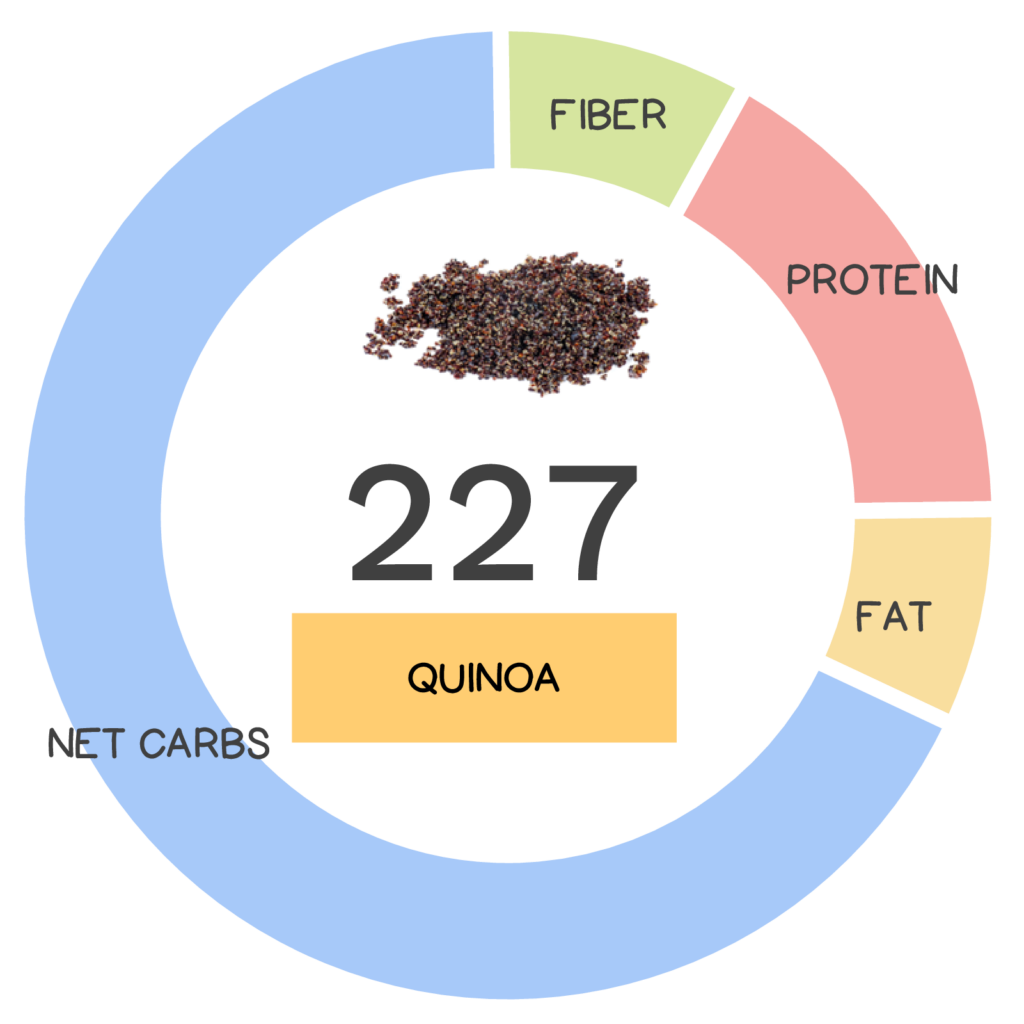
Rising in popularity due to its gluten-free, superfood status, quinoa is tasty, quick and easy to cook, and nutrient-rich, which makes it a favored substitute for less-healthy grains, especially for vegans and vegetarians, since it’s one of the few plant sources of complete protein. But is this expensive whole “grain” worth all the hype – should we all be keen on quinoa?
Pseudograins are the starchy seeds of broad-leafed plants, while grains are the fruits or starchy seeds of grasses.
First off, this “grain” is not actually a grain at all but is considered a pseudograin. Pseudograins are the starchy seeds of broad-leafed plants consumed in the same way as grains, which are the fruits or starchy seeds of grasses. The most common examples of pseudograins include amaranth, buckwheat, chia, and quinoa. Compared to grains, pseudograins tend to provide more nutrition.
Quinoa is a member of the amaranth family, and is related to beets and spinach.
Considered an ancient grain, quinoa was a South American staple before European colonization. The Incas even nicknamed it as “the mother of all grains.” It originated in the Andes region and was initially used to feed livestock before becoming human food approximately 3 to 4,000 years ago. Quinoa belongs to the amaranth family, along with beets and spinach, and is the seed of the species Chenopodium quinoa. The genus name Chenopodium is Greek for goose foot, named because many of its species have leaves shaped like the foot of a – you guessed it – goose! Quinoa is the most commercially important member of the goosefoot genus. The plant is famous for its tiny edible seeds (which can be black, brown, purple, red, white, or yellow) but the young leaves of the plant can also be eaten as a veggie. Traditionally quinoa has been harvested by hand due to a high degree of variability in seed maturation, even within the same plant! Today, varieties which mature more uniformly, are being mechanically harvested for commercial production. Top producers of quinoa include Bolivia and Peru, who combined are responsible for 97% of world production.
NASA is interested in quinoa for long-duration human space flights.
Interestingly, quinoa was selected as an experimental crop by NASA for long-duration human space flights because of its versatility, ease of use, high protein content, and potential for increased yields in controlled environments. That is out of this world!
Nutrivore Score for Quinoa – 227
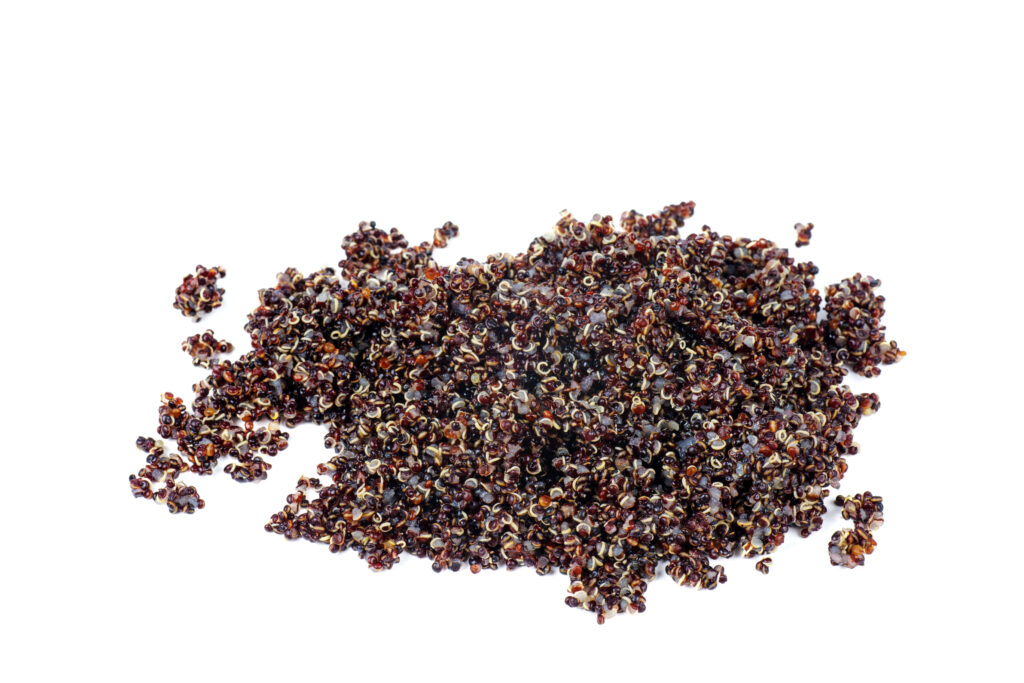
Quinoa has a Nutrivore Score of 227, making it a medium nutrient-dense food! Plus, it is a low-fat food; quinoa contains 2.6 grams of total fat per serving!
Per serving, quinoa is an excellent source (20-50% daily value) of copper, magnesium, manganese, vitamin B7 (biotin), vitamin B9 (folate), and vitamin E; and a good source (10-20% daily value) of betaine, dietary fiber, iron, phosphorus, polyphenols, protein, vitamin B1 (thiamin), vitamin B2 (riboflavin), vitamin B6 (pyridoxine), and zinc.
Ditch Diets. Embrace Nutrients. Start with this FREE Guide.
Sign up for the free Nutrivore Newsletter, your weekly, science-backed guide to improving health through nutrient-rich foods — without dieting harder —and get the Beginner’s Guide to Nutrivore delivered straight to your inbox!

Quinoa Nutrition Facts
One serving of uncooked quinoa is standardized to 1/4 cup or about 43 grams (1.5 ounces). When you cook quinoa, it increases in volume: 1/4 cup uncooked quinoa is roughly equivalent to 1/2 cup cooked quinoa.
Quinoa Nutrition Facts Per Serving
| Quinoa, uncooked | Nutrivore Score: 227 | Nutrient Density: Medium |
|---|---|---|
| Serving Size: 1/2 cup cooked (1/4 cup raw) | Protein: 6.1 grams | Net Carbohydrates: 24.6 grams |
| Calories: 158 | Total Fat: 2.6 grams | Dietary Fiber: 3.0 grams |
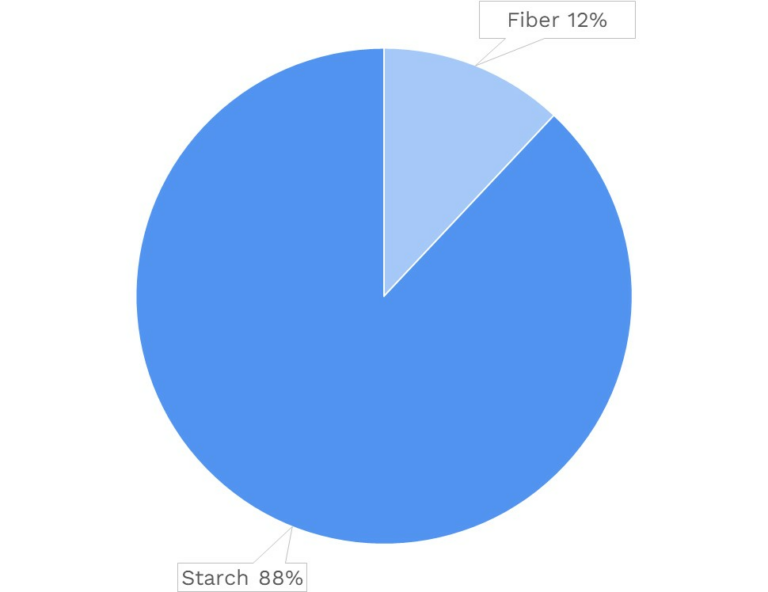
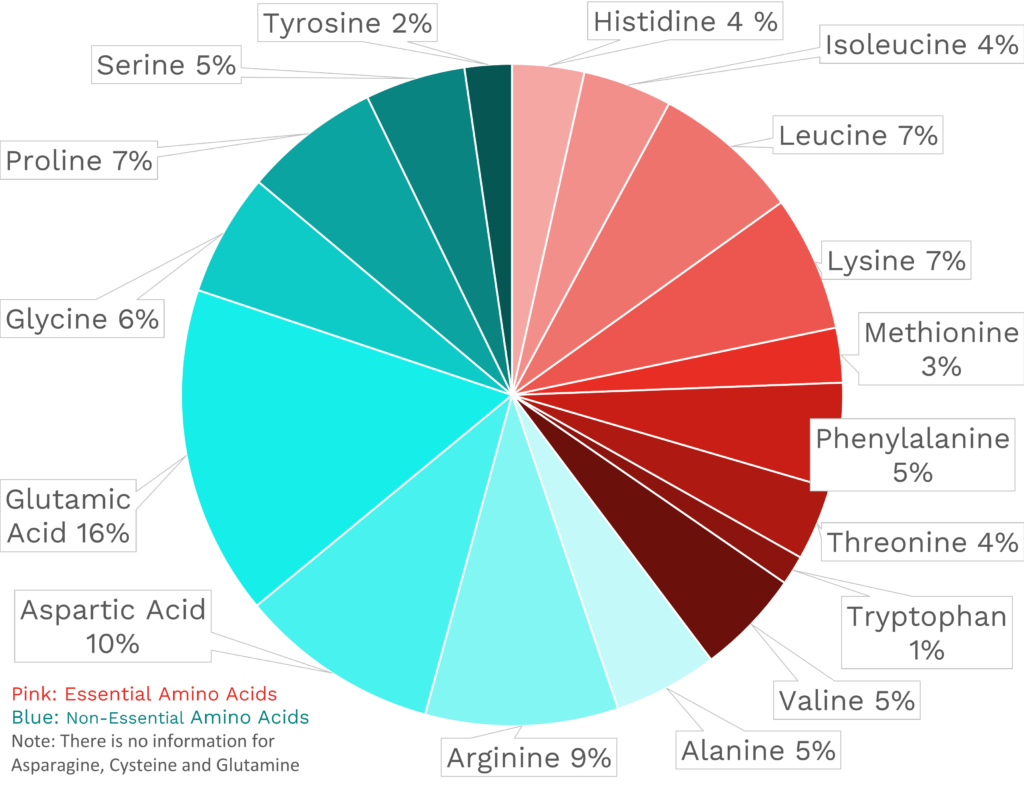

| VITAMINS | ||
|---|---|---|
| Vitamin A | 0.4 μg RAE | 0% DV |
| Vitamin B1 (Thiamin) | 154.8 μg | 13% DV |
| Vitamin B2 (Riboflavin) | 136.7 μg | 11% DV |
| Vitamin B3 (Niacin) | 0.7 mg | 4% DV |
| Vitamin B5 (Pantothenic Acid) | 0.3 mg | 7% DV |
| Vitamin B6 (Pyridoxine) | 209.4 μg | 12% DV |
| Vitamin B7 (Biotin) | 14.4 μg | 48% DV |
| Vitamin B9 (Folate) | 79.1 μg | 20% DV |
| Vitamin B12 (Cobalamin) | 0.0 μg | 0% DV |
| Vitamin C | ~ | ~ |
| Vitamin D (D2 + D3) | 0.0 μg | 0% DV |
| Vitamin E | 3.2 mg | 21% DV |
| Vitamin K | 0.0 μg | 0% DV |
| Choline | 30.2 mg | 5% DV |
| Myo-Inositol | ~ | ~ |
| CoQ10 | ~ | ~ |
| FUNCTIONAL FATS | ||
|---|---|---|
| MUFA | 0.7 g | 3% DV |
| ALA | 111.8 mg | 7% DV |
| EPA + DHA | 20.2 mg | 8% DV |
| CLA | ~ | ~ |
| Linoleic Acid | 1.3 g | 8% DV |
| MCT’s | 0.0 g | ~ |
| MINERALS | ||
|---|---|---|
| Calcium | 20.2 mg | 2% DV |
| Copper | 253.7 μg | 28% DV |
| Iodine | ~ | ~ |
| Iron | 2.0 mg | 11% DV |
| Magnesium | 84.7 mg | 20% DV |
| Manganese | 874.2 μg | 38% DV |
| Phosphorus | 196.5 mg | 16% DV |
| Potassium | 242.1 mg | 5% DV |
| Selenium | 3.7 μg | 7% DV |
| Sodium | 2.2 mg | 0% DV |
| Zinc | 1.3 mg | 12% DV |
| PHYTONUTRIENTS | ||
|---|---|---|
| Carotenoids | 74.0 μg | ~ |
| Polyphenols | 139.8 mg | ~ |
| Phytosterols | 25.9 mg | ~ |
| Glucosinolates | ~ | ~ |
| Thiosulfinates | ~ | ~ |
| Betalains | ~ | ~ |
| AMINO ACIDS & PEPTIDES | ||
|---|---|---|
| Taurine | ~ | ~ |
| Ergothioneine | ~ | ~ |
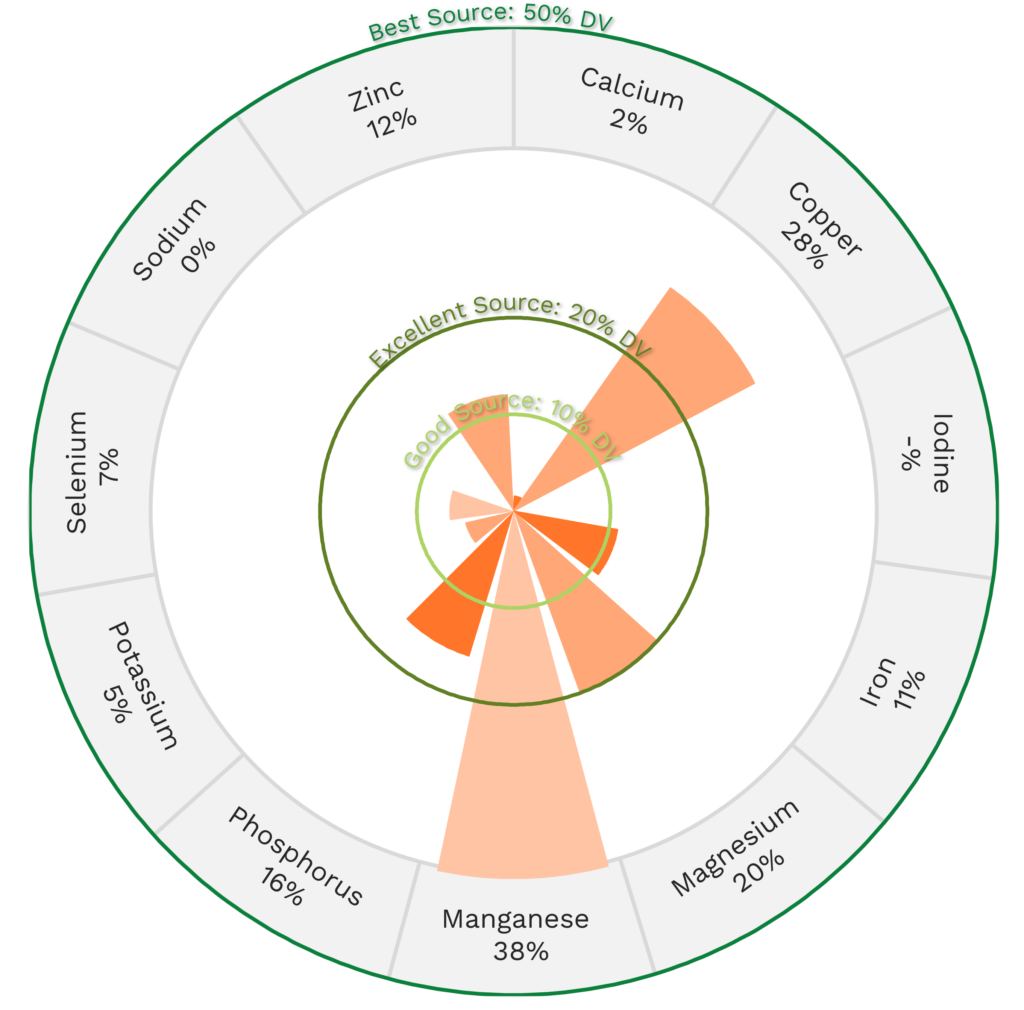
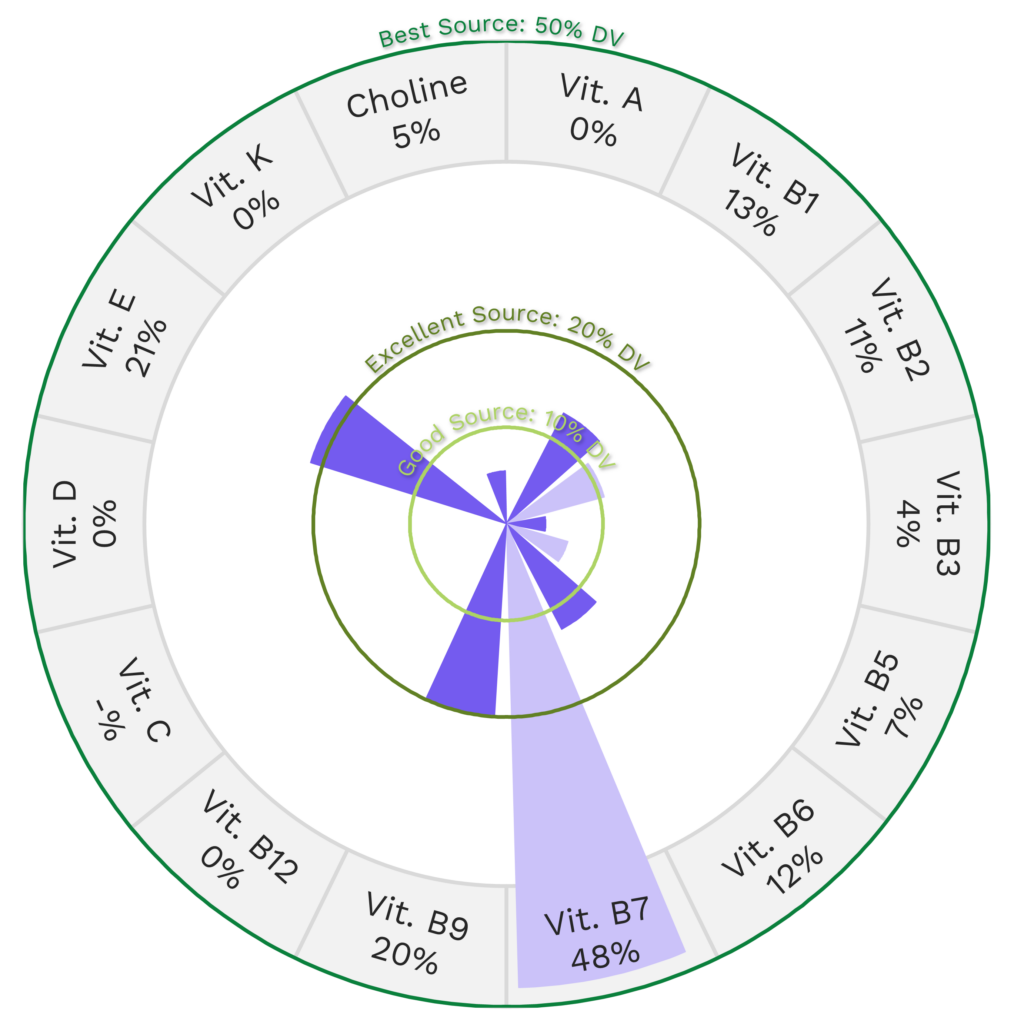
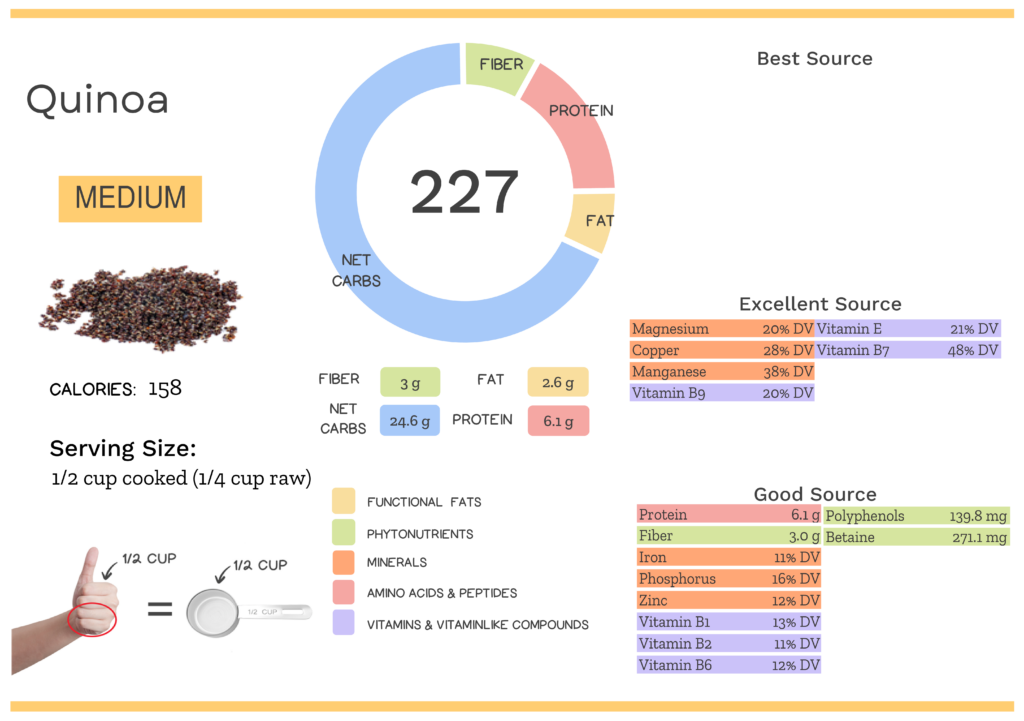
Quinoa Nutrition Varies With Cooking
The Nutrivore Score of quinoa varies based on method of preparation.
| NUTRIVORE SCORE | |
|---|---|
| Quinoa, cooked | 219 |
| Quinoa, uncooked | 227 |
Keen on all the nutrition in quinoa? Maybe your friends will be too!
Health Benefits of Quinoa Nutrients
Let’s take a closer look at all of the best and excellent source of nutrients found in a 1/2-cup serving of quinoa and see how they benefit our health.
Quinoa Provides 48% DV Vitamin B7 (Biotin)
Quinoa is an excellent source of vitamin B7 (biotin), providing 48% of the daily value per 1/2-cup serving!
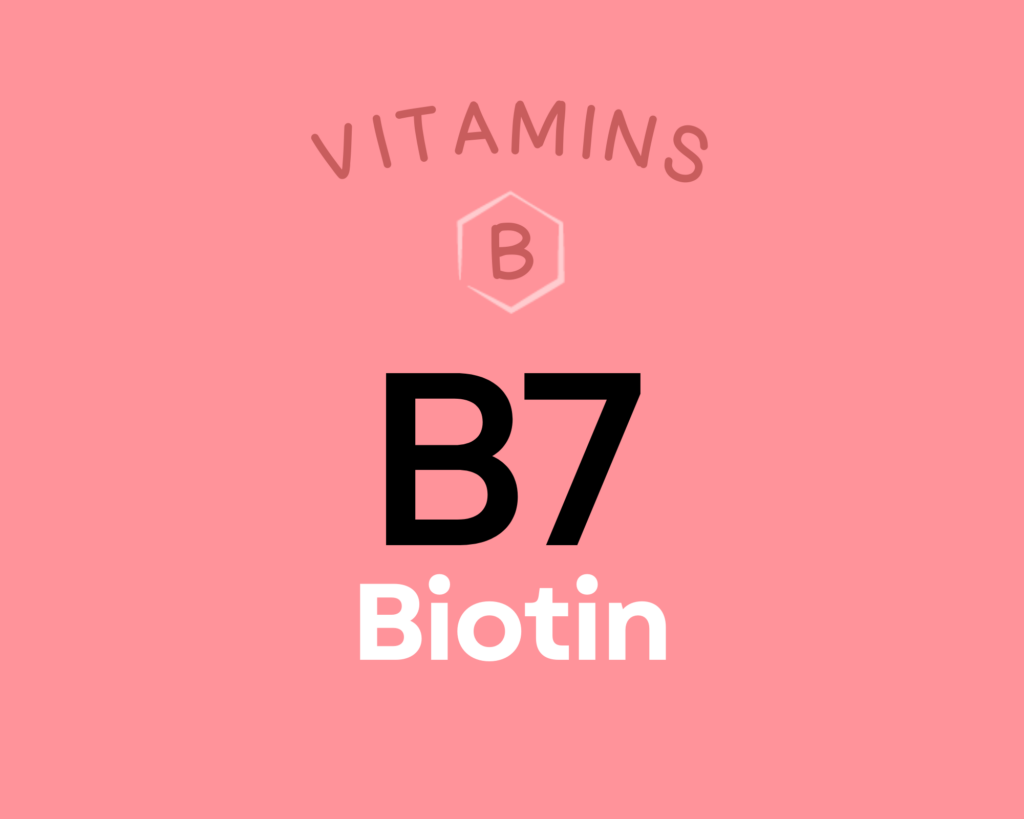
Biotin is a water-soluble B vitamin, also known as vitamin B7. Like other B vitamins, it plays an important role in energy metabolism (serving as a coenzyme for five carboxylase enzymes), neurotransmitter production, cellular function, and the function of various organs. Getting enough biotin can help support healthy nail and hair growth. It’s also particularly important during pregnancy, with low intakes increasing the risk of premature delivery and birth defects. There’s even some evidence biotin can benefit diabetics and reduce functional disabilities in people with multiple sclerosis. Learn more about biotin here.
Quinoa Provides 38% DV Manganese
Quinoa is also an excellent source of manganese, providing 38% of the daily value per 1/2-cup serving!
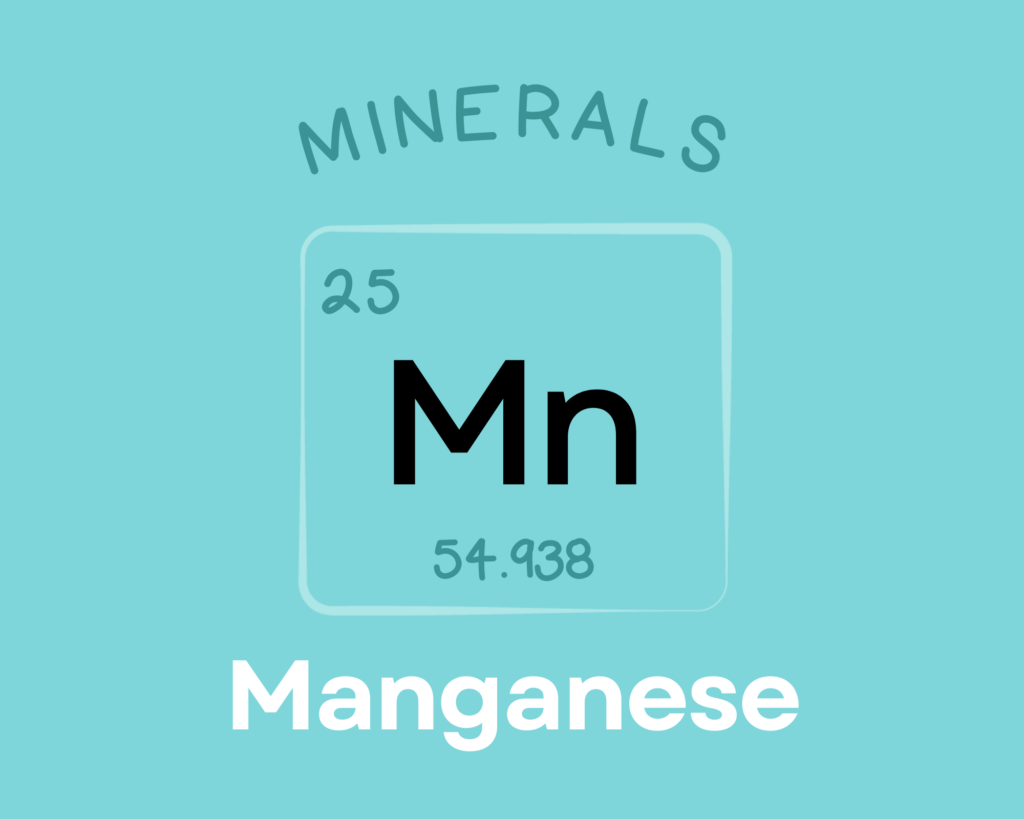
Manganese is an essential mineral that serves as a cofactor and component of numerous enzymes. Through these roles, it’s involved in carbohydrate metabolism, amino acid synthesis, gluconeogenesis, detoxification, lipid processing, free radical defense, bone and collagen formation, and wound healing. Although the research so far is limited, some evidence suggests that manganese can protect against osteoporosis and diabetes, and may even be involved in seizure disorders. Learn more about manganese here.
Quinoa Provides 28% DV Copper
Quinoa is an excellent source of copper, providing 28% of the daily value per 1/2-cup serving!
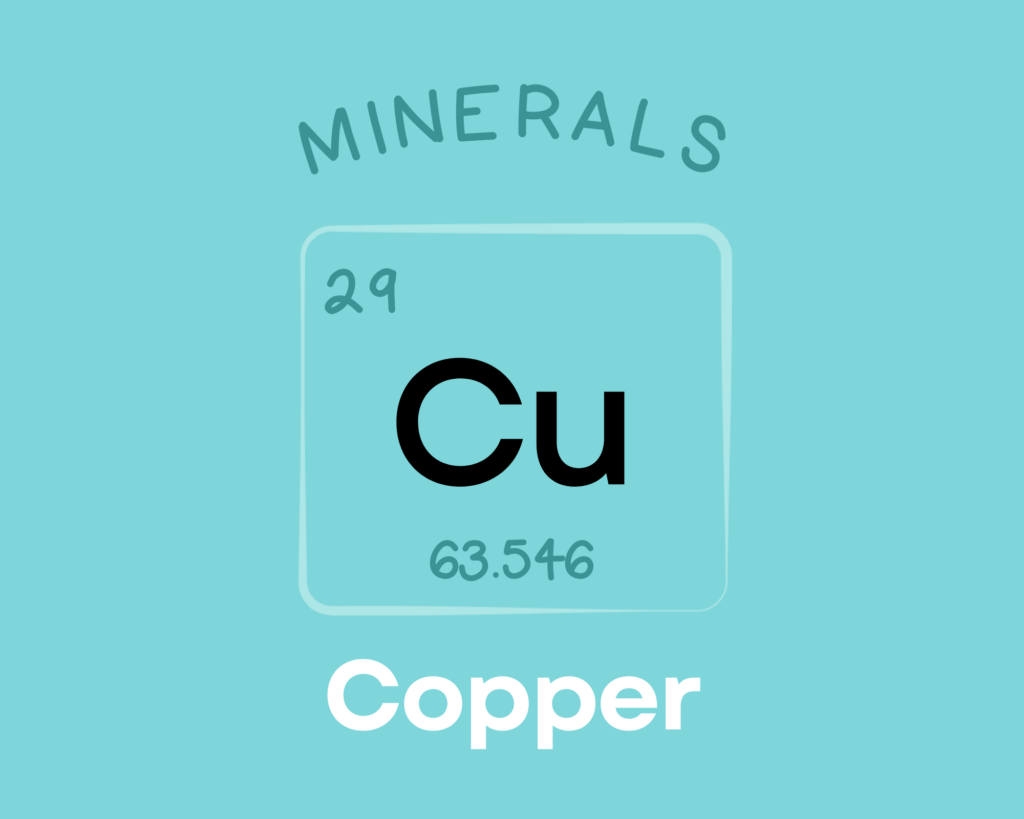
Copper is a trace mineral that’s essential for all living organisms. Copper serves as a component of numerous enzymes and proteins in the body, giving it diverse roles in the growth, development, and maintenance of various organs (including the heart and brain), bone, and connective tissue. Copper is also involved in glucose and cholesterol metabolism, helps regulate gene expression, can scavenge free radicals, and is needed for the production of red blood cells. Learn more about copper here.
Quinoa Provides 21% DV Vitamin E
Quinoa is also an excellent source of vitamin E, providing 21% of the daily value per 1/2-cup serving!

Vitamin E is actually a group of eight different vitamins, though the form alpha-tocopherol is the most biologically important. Its most significant role is as a fat-soluble antioxidant, protecting the lipids in cell membranes from oxidative damage. Its free radical-scavenging abilities make vitamin E helpful for cardiovascular health, cancer protection, neurological health (including slowing the progression of Alzheimer’s disease), and any situations where oxidative stress increases (such as during pregnancy). There’s even evidence that getting enough vitamin E can reduce the risk of the common cold! Learn more about vitamin E here.
Quinoa Provides 20% DV Magnesium
Quinoa is an excellent source of magnesium, providing 20% of the daily value per 1/2-cup serving!
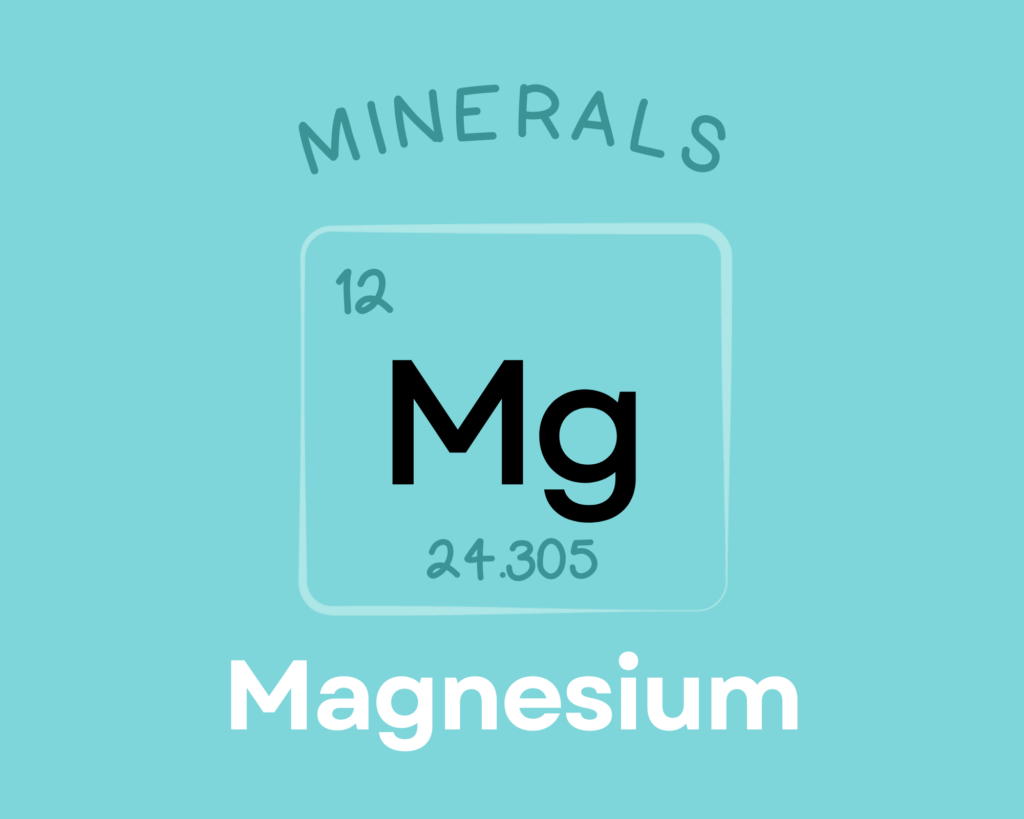
Magnesium is an essential mineral needed by every cell in the body. As an electrolyte, it’s important for regulating fluid balance, nerve and muscle function, blood pH, and neurotransmission. It also serves as a cofactor for hundreds of different enzymes, giving it a role over 300 metabolic reactions—including pathways for cell signaling, energy production, protein synthesis, nucleic acid synthesis, and ion transport. Magnesium also has important structural functions in cells and bone tissue. Consuming enough magnesium may help protect against a variety of chronic diseases, including cardiovascular disease, type 2 diabetes, and osteoporosis. Learn more about magnesium here.
Quinoa Provides 20% DV Vitamin B9 (Folate)
Quinoa is also an excellent source of vitamin B9 (folate), providing 20% of the daily value per 1/2-cup serving!

Vitamin B9 (folate) is an essential B vitamin that plays roles in blood cell production, the formation of genetic material (including DNA), and cell growth and function. It’s particularly important during pregnancy, when folate demands increase due to the rapid creation of new cells and DNA. Along with helping protect against fetal development problems, folate can support cardiovascular health, potentially protect against certain cancers, and reduce the risk of cognitive and neurological disorders later in life. Learn more about vitamin B9 here.
Learn What Foods Are the Best Sources of Every Nutrient

The Top 25 Foods for Every Nutrient
The Top 25 Foods for Every Nutrient e-book is a well-organized, easy-to-use, grocery store-friendly guide to help you choose foods that fit your needs of 43 important nutrients while creating a balanced nutrient-dense diet.
Get two “Top 25” food lists for each nutrient, plus you’ll find RDA charts for everyone, informative visuals, fun facts, serving sizes and the 58 foods that are Nutrient Super Stars!
Buy now for instant digital access.
How Much Quinoa Should We Eat Per Day?
Grains and pseudograins, especially in their whole form, are a nutritionally valuable concentrated source of fiber, which is responsible for most of their health benefits.
The health benefits attributed to fiber are numerous. Diets rich in fiber reduce the risk of many cancers (especially colorectal cancer, but also liver, pancreas, and others) and cardiovascular disease, as well as lower inflammation overall. Prospective studies have confirmed that the higher our intake of fiber, the lower our inflammation (as measured by C-reactive protein). In fact, a recent study showed that the only dietary factor that correlated with incidence of ischemic cardiovascular disease is low fiber intake (not saturated fat!); the more fiber we eat, the lower our risk. If someone has kidney disease, a high-fiber diet reduces their risk of mortality. If someone has diabetes, a high-fiber diet reduces their risk of mortality. A high fiber intake can even reduce the chances of dying from an infection.
Many of the health benefits attributed to fruits, vegetables, nuts, legumes, and whole grains are due to the way the fiber in these foods impact the gut microbiota. However, fiber has other effects, too, like regulating peristalsis of the intestines (the rhythmic motion of muscles around the intestines that pushes food through the digestive tract), stimulating the release of the suppression of the hunger hormone ghrelin (so we feel more full), and slowing the absorption of simple sugars into the bloodstream to regulate blood sugar levels and avoid the excess production of insulin. Fiber also binds to various substances in the digestive tract (like hormones, bile salts, cholesterol, and toxins) and, depending on the type of fiber, can facilitate either elimination or reabsorption (for the purpose of recycling, which is an important normal function for many substances like bile salts and cholesterol), both of which can be extremely beneficial—if not essential—for human health.
Based on all of these benefits, the recommended dietary intake for fiber is 14 grams per 1000 kcal, which translates to 28 grams of fiber, if you eat a 2,000 calorie per day diet. However, there are many studies showing greater benefits from even higher levels of intake. Learn more about fiber here.
Easily track your servings of Nutrivore Foundational Foods!

The Nutrivore Weekly Serving Matrix
The Nutrivore Weekly Serving Matrix digital resource is an easy-to-use and flexible weekly checklist designed to help you maximize nutrient-density and meet serving suggestions of Nutrivore foundational foods, all without having to weigh or measure your foods!
Includes a 22-page instructional guide and downloadable interactive guides.
Buy now for instant digital access.
cITATIONS
Expand to see all scientific references for this article.
Frida Food Database. National Food Institute, Technical University of Denmark: Quinoa, white, raw
Nystrom L, Schar A, Lampi AM. Steryl glycosides and acylated steryl glycosides in plant foods reflect unique sterol patterns. European Journal of Lipid Science and Technology. 2012. Vol 114(6):656-669. doi: https://doi.org/10.1002/ejlt.201200033.
Paśko P, Bartoń H, Zagrodzki P, Gorinstein S, Fołta M, Zachwieja Z. Anthocyanins, total polyphenols and antioxidant activity in amaranth and quinoa seeds and sprouts during their growth. Food Chemistry. 2009. Vol 115(3): 994-998. ISSN 0308-8146. https://doi.org/10.1016/j.foodchem.2009.01.037.
USDA Food Central Database: Quinoa, uncooked
Watanabe T, Kioka M, Fukushima A, Morimoto M, Sawamura H. Biotin content table of select foods and biotin intake in Japanese. Int J Anal Bio-Sci. 2014. Vol 2(4):109-125.


